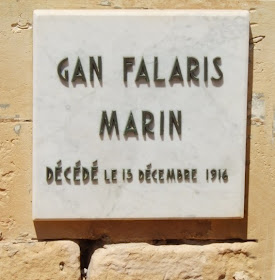 |
The Graveyard as a sign of community
Saint Mark's New Lakenham, Norwich [Link]
© Godric Godricson |
Oh dear! The idea of boundaries and parish have come to mind as I visit parishes. Boundaries are fascinating although not always helpful in forming a community of the living or for the departed. People can be geographically ruled into communities and they can be ruled out of communities. Inclusion and exclusion are the words to be used in this debate. We have a lot of sociological material available as analytical tools and the work of social anthropologists is always helpful in looking at groups and ‘norming, forming and storming’ or whatever the phrase.
Churches, parishes and graveyards are not always easy to categorise when it comes to an explanation of how they actually are, how they came to be or how they are perceived. I use as an example a [nameless] Roman Catholic parish that I knew as a young person. It was always a strange mix of local pride in itself and a long and colourful history; Polish/Czech/Hungarian Post-War immigration and the problems of having a priest who was himself a convert to the faith from a Reformed tradition. Throw in an occasional Latin Mass and a scandal or two and the Parish was often dysfunctional although on the surface it seemed to work in perfect harmony. The graveyard was a poor little thing crammed in against the walls and without care and attention.
Membership of the parish and the graveyard should have been wonderfully multi-cultural although it wasn’t because the Czechs, Poles and Hungarians who had settled circa 1940’s to 1953 (ish) had assimilated (although not totally) and they wanted to retain some solidarity with each other and separateness to others. English parishioners retained a romantic idea of being the descendants of rosy cheeked English men although it was clear from the surnames in the graveyard that they were more likely to descend from Irish immigrants circa 1840’s onwards. The priest’s own history made him more right wing, punitive and reactionary as he tried to prove his devotion to the Church he had joined.
 |
Gan Falaris Décédé 1915
Buried - Kalkara, Malta [Link]
|
In effect, the parish had what are sociologically referred to as deep ‘social cleavages’. The effect of such division was that whilst the descendants of the central Europeans played together quite happily at the same school with their ‘English’ counterparts; they sat separately at Church and the apparently English boys were implausibly sometimes called “Sean”, “Francis Xavier” and even “Eoin”. Confusing! Well it was when the children from the traveller community started to attend the same school sometime in the mid 1970’s and brought in the minority use of the Irish language just as the bombings on mainland Britain made Irish people the source of suspicion. The Scottish families whose fathers came to work nearby gave a slightly different and industrial mix to the parish. A friend at school had a father from Quebec and that brought even more spice to the mix.
The English in the local community could often not tell Scots and Irish apart based on accent and mannerism and so there was always a sort of ‘white racism’ being played out as local people tried to separate out the ‘Gastarbeiter’ Scots who were really “One of us!” and the Irish/Travellers where there was a perception of mistrust and even fear.
 |
Ettore Barbara
Buried - Kalkara, Malta [Link]
|
In a manner of speaking; membership of the parish was less based on nationality, class, social origins or income and more about religious allegiance as this was a common point which to share. Less about Englishness and class and more about religious and cultural association and a willingness to be seen as “Catholic”. Good standing was through overt obedience to the Pope. As long as this was the case then membership was achieved and maintained. The problem came when the Church hierarchy started to actively (deliberately?) loose adherents as it started to preach about the 3 great moral sins for the Church - homosexuality, divorce and abortion.
The Graveyard became a place where we were all integrated into the communal unity of the living and the dead even if the hierarchy drove people away. The Maltese understand these matters better and the Cemeteries of Addolorata and Ta’Braixa have beauty and practicality combined in equal measure. The Maltese are another overlay in British culture but that’s another story for another day.



















